Abstract
Each member of a group of 8 patients with acute cholera was treated with a mixture of four cholera bacteriophage preparations containing over 2 × 1012 phage particles/ml. These massive doses were intended to kill immediately all vibrios in the intestine by ”lysis from without”. The numbers of Vibrio cholerae were drastically reduced rapidly. In 4 patients, V. cholerae was completely eliminated from the stools early in the treatment; the total stool volume and after-treatment of diarrhoea were reduced in comparison with a control group but were higher than in a group of patients treated with tetracycline. In the other 4 patients treated with phage, vibrios disappeard more slowly from the stools and there was no apparent clinical effect of the phage. In all the patients treated with phage, the duration of diarrhoea was longer than in patients in a control group who excreted vibrios for a similar length of time although the stool output was similar. This was interpreted as being due to the persistence of vibrios in foci of infection in the upper intestine.
It is concluded that treatment of cholera with massive doses of bacteriophage is not as effective as treatment with tetracycline. However, phage can selectively eliminate the majority of vibrios without affecting the other intestinal flora and without any apparent toxic effect on the patient. Phage might therefore be useful as a research tool.
Full text
PDF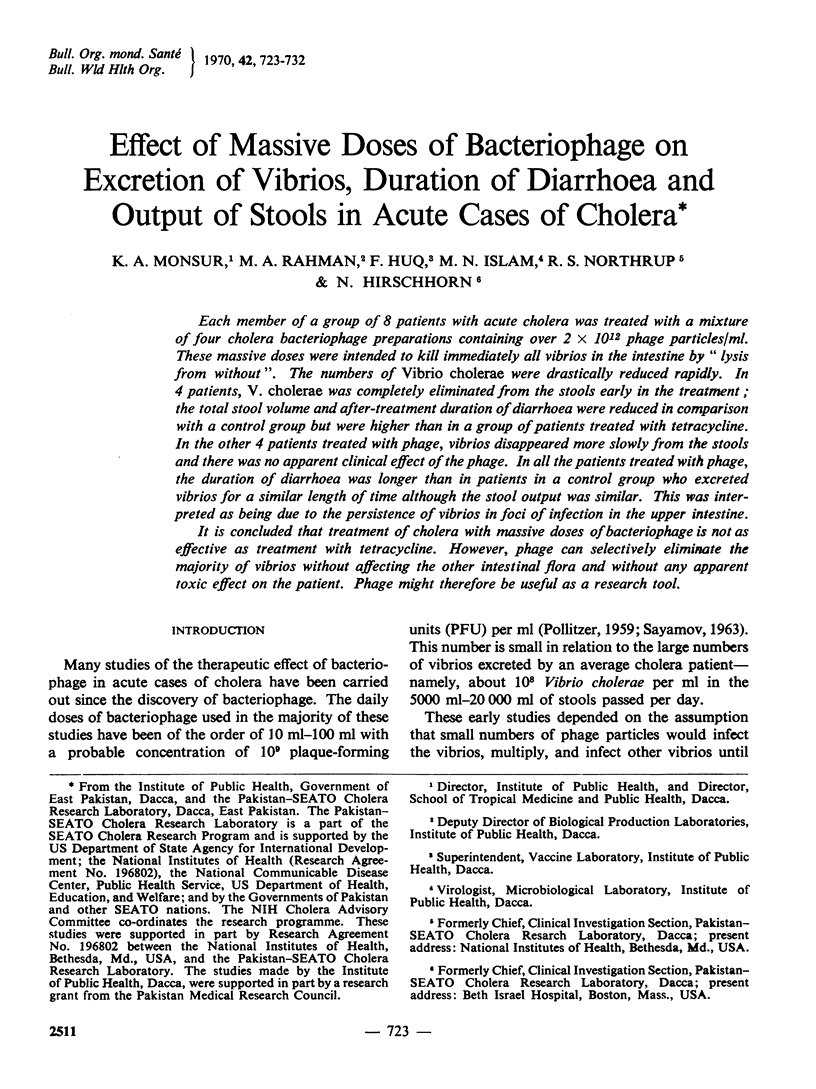
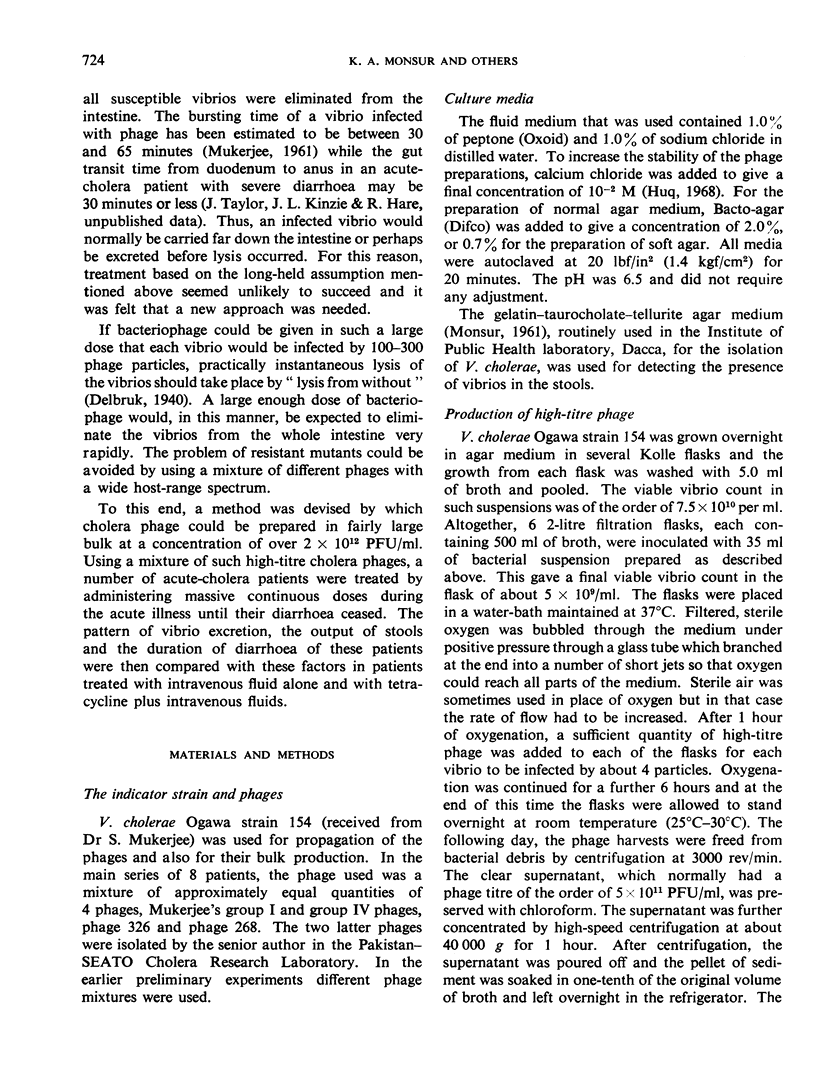
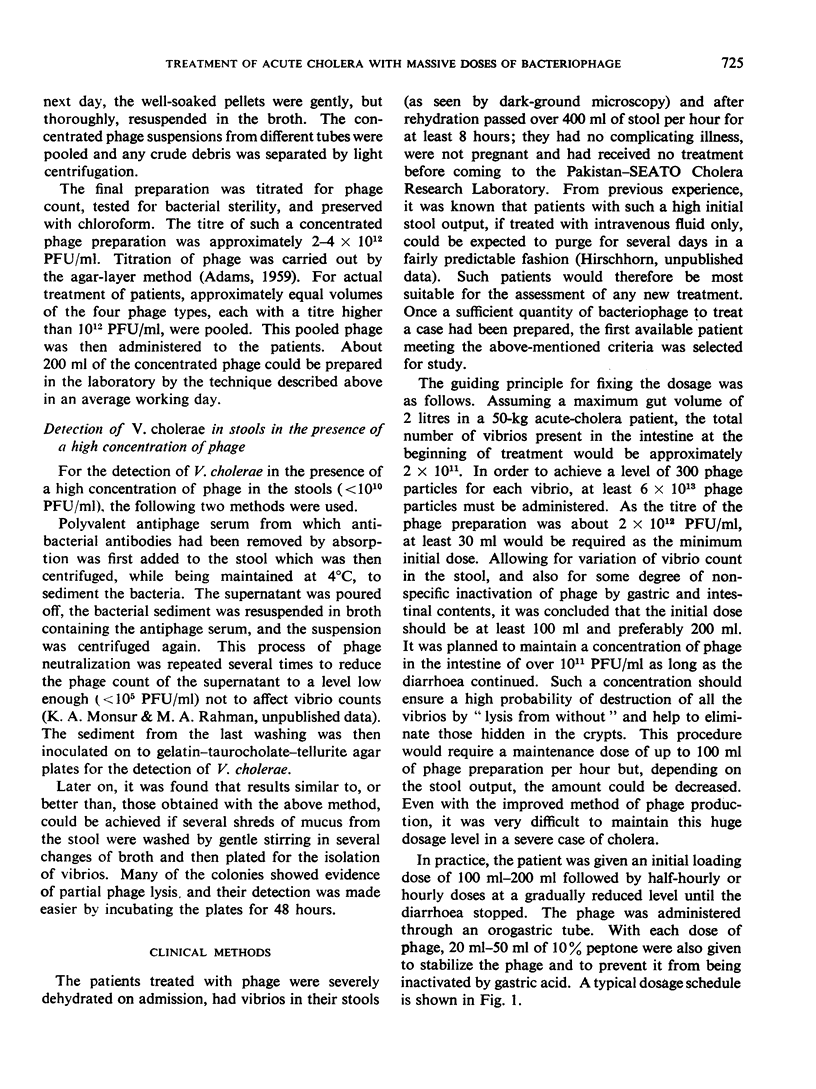
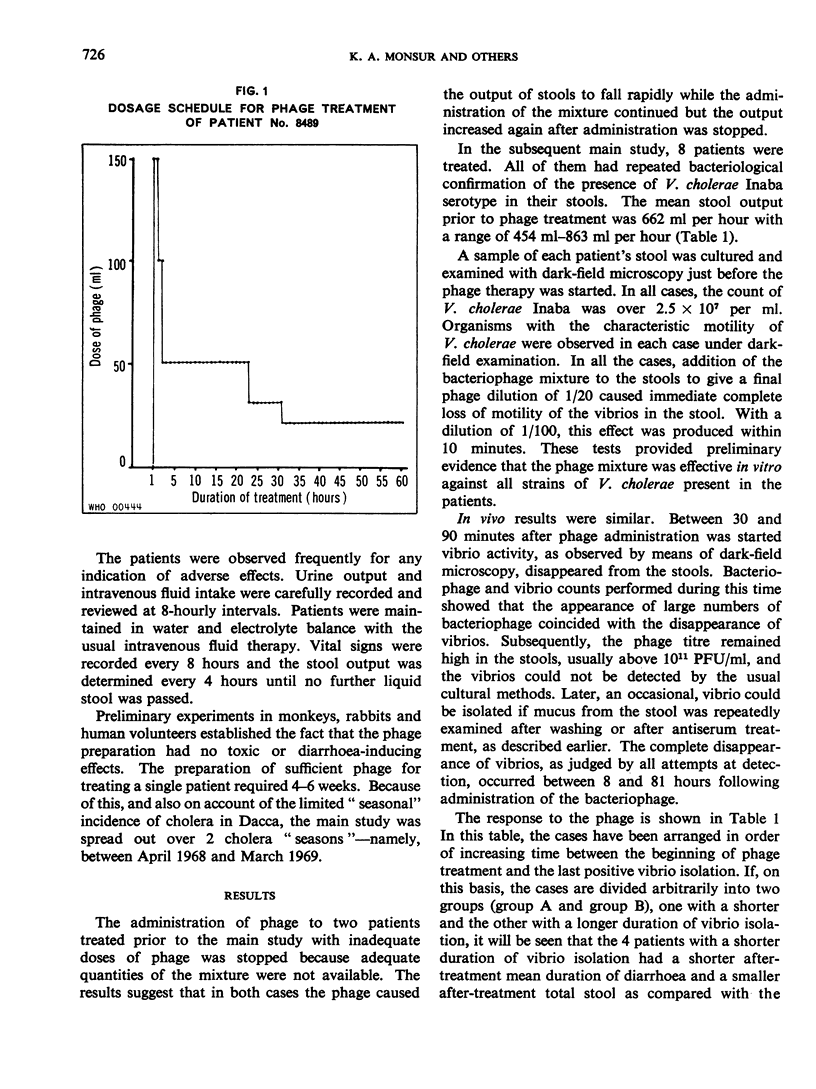
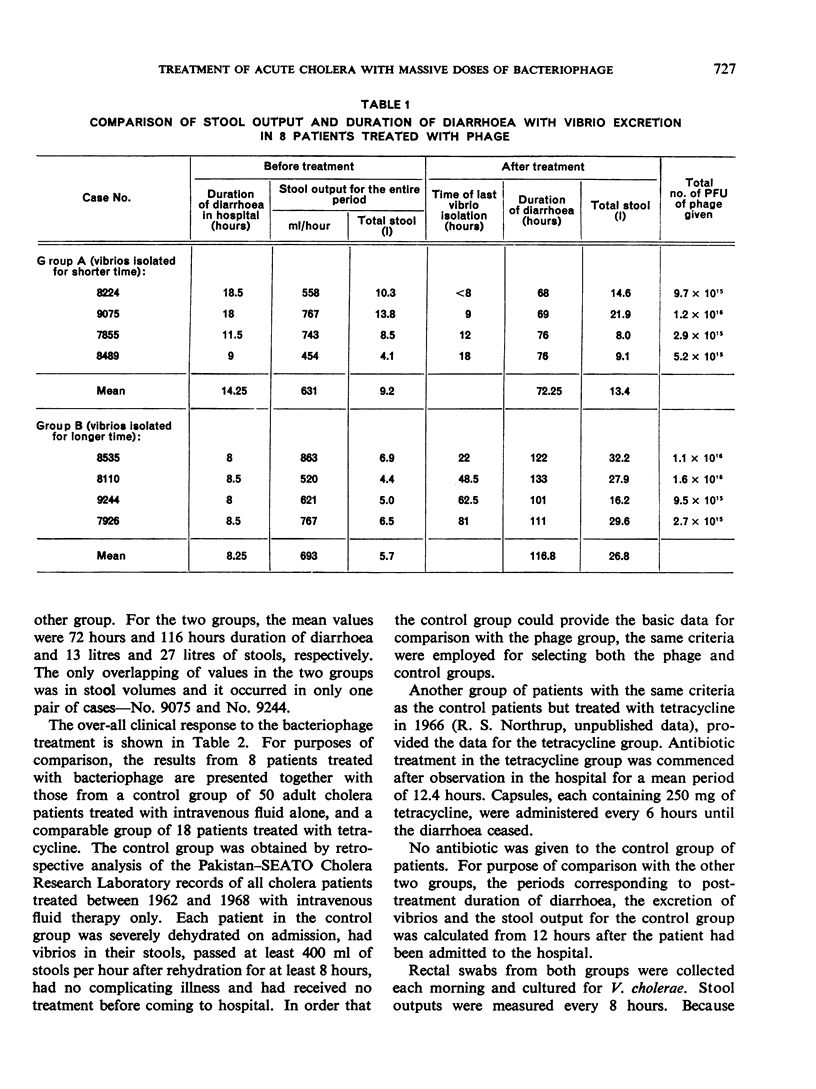
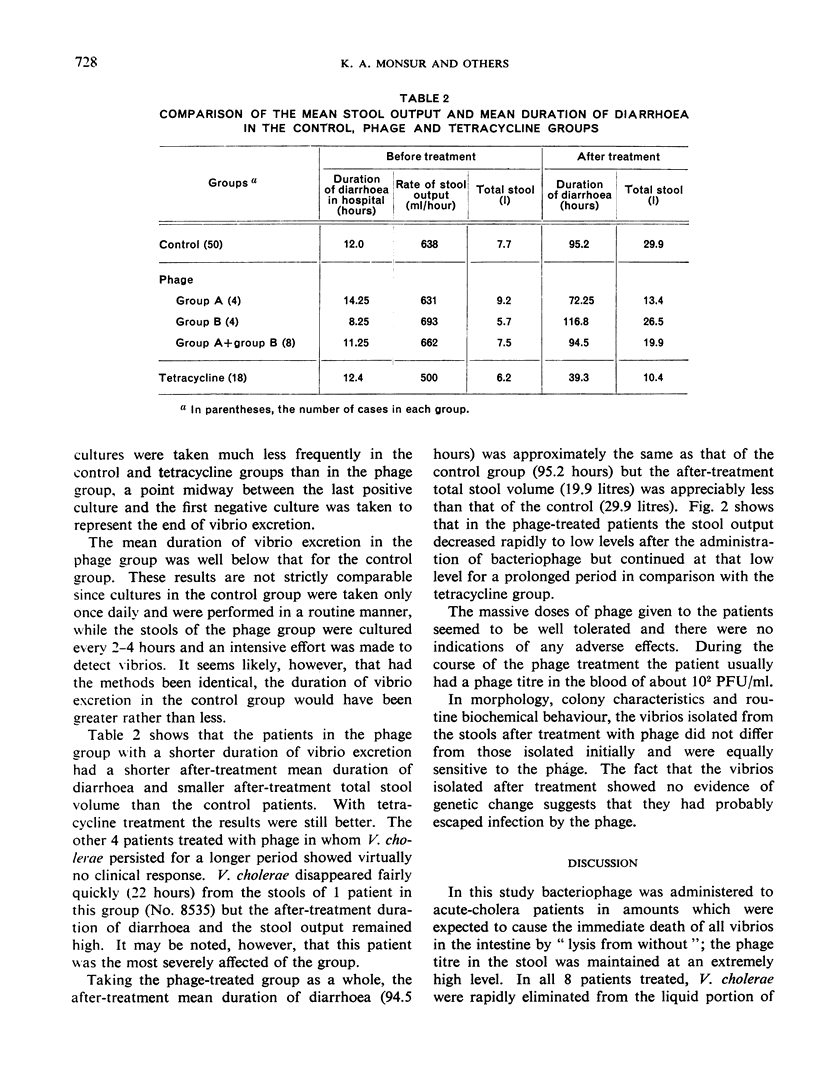

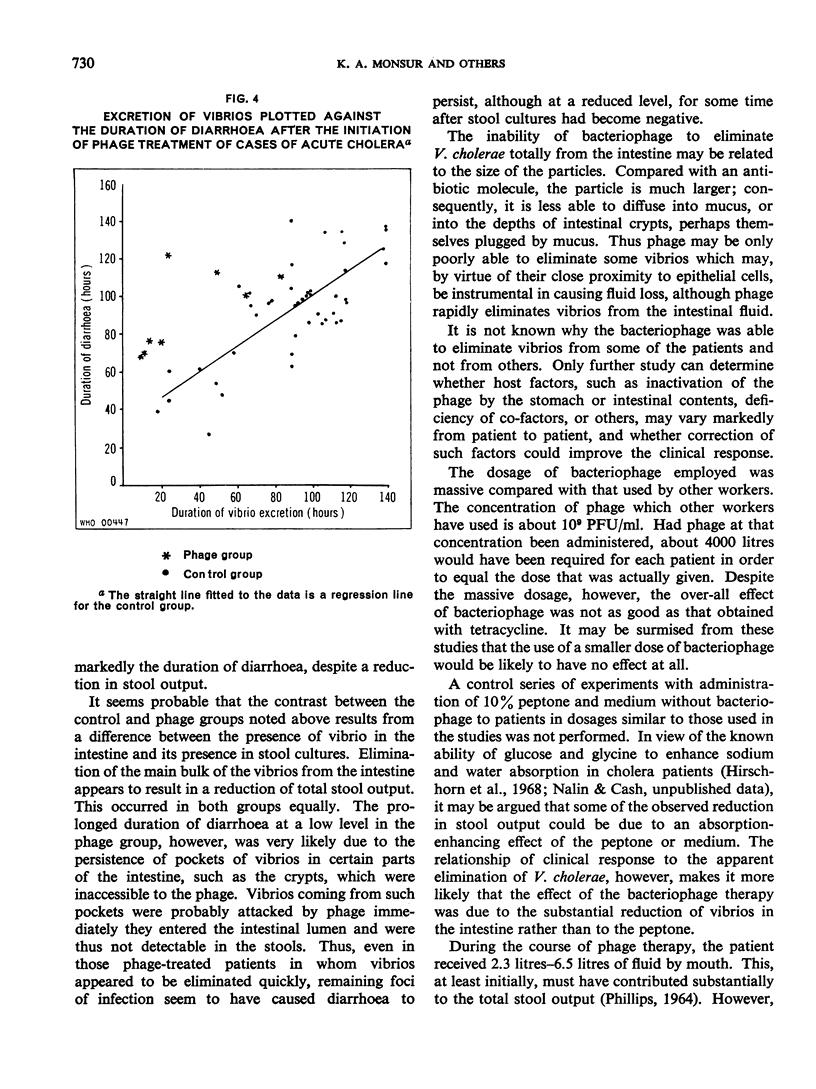
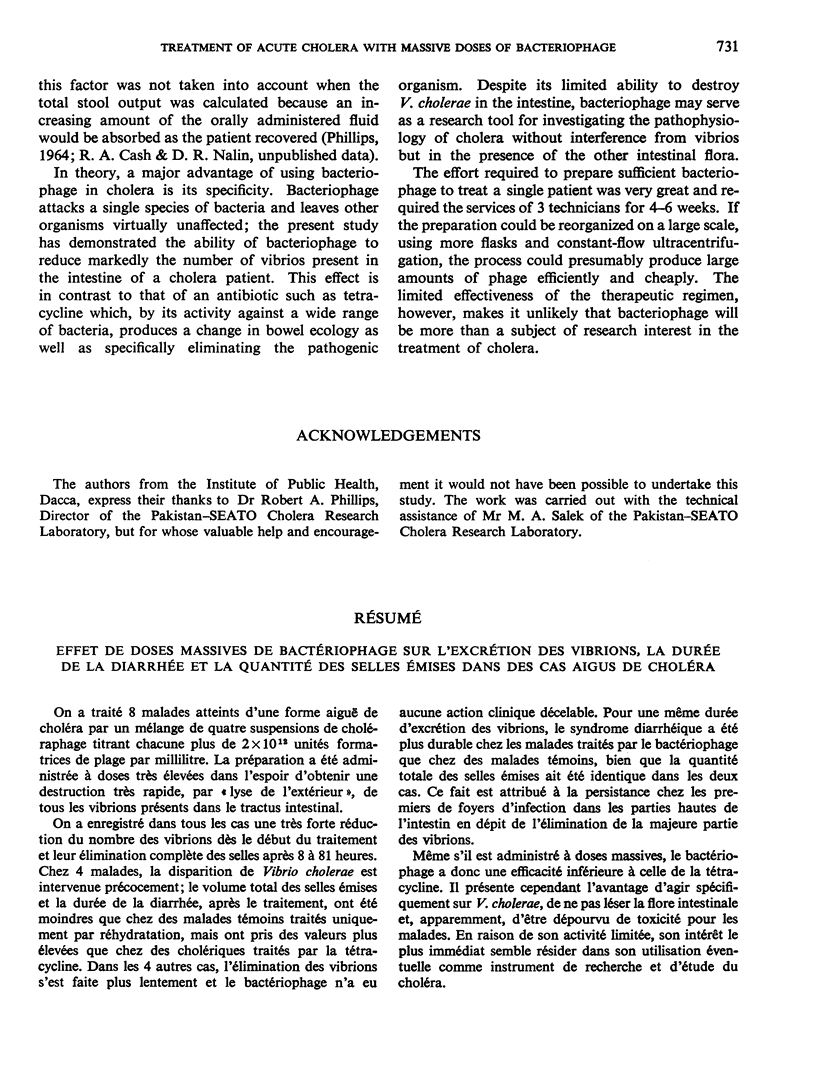
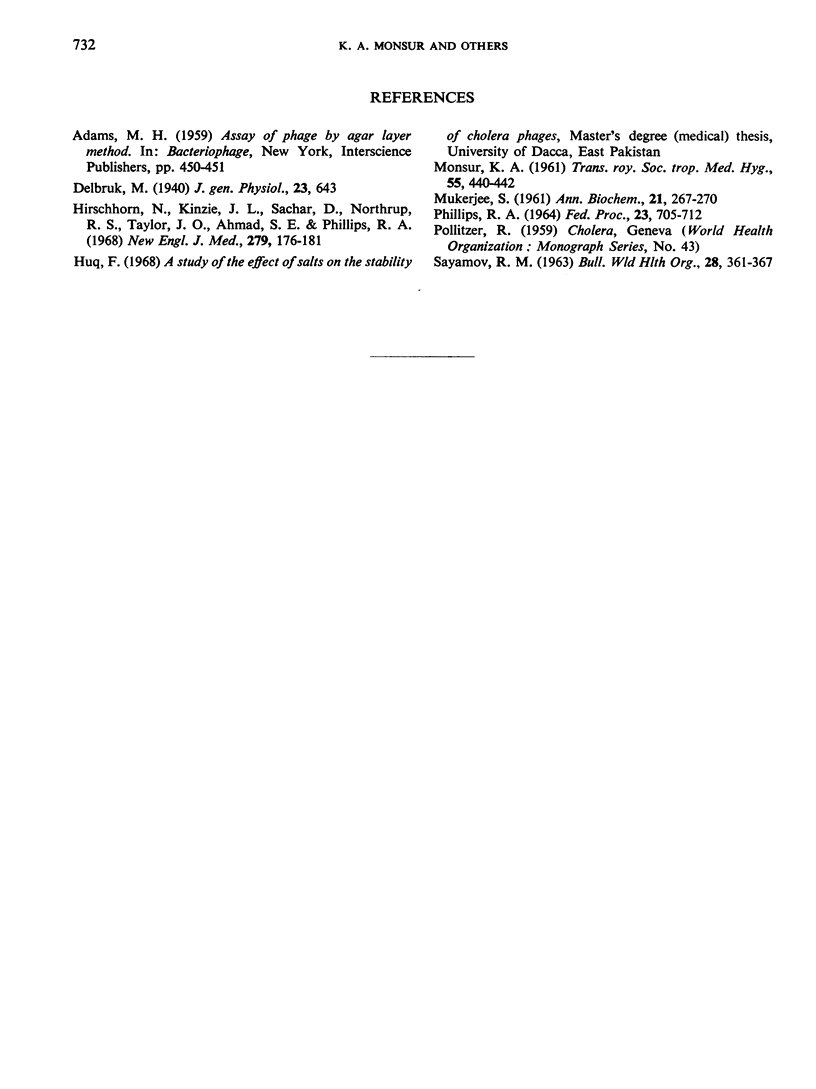
Selected References
These references are in PubMed. This may not be the complete list of references from this article.
- Delbrück M. THE GROWTH OF BACTERIOPHAGE AND LYSIS OF THE HOST. J Gen Physiol. 1940 May 20;23(5):643–660. doi: 10.1085/jgp.23.5.643. [DOI] [PMC free article] [PubMed] [Google Scholar]
- Hirschhorn N., Kinzie J. L., Sachar D. B., Northrup R. S., Taylor J. O., Ahmad S. Z., Phillips R. A. Decrease in net stool output in cholera during intestinal perfusion with glucose-containing solutions. N Engl J Med. 1968 Jul 25;279(4):176–181. doi: 10.1056/NEJM196807252790402. [DOI] [PubMed] [Google Scholar]
- MONSUR K. A. A highly selective gelatin-taurocholate-tellurite medium for the isolation of Vibrio cholerae. Trans R Soc Trop Med Hyg. 1961 Sep;55:440–442. doi: 10.1016/0035-9203(61)90090-6. [DOI] [PubMed] [Google Scholar]
- MUKERJEE S. Characterization of the cholera typing phages. III: Some observations on their dynamics of generation. Ann Biochem Exp Med. 1961 Sep;21:267–270. [PubMed] [Google Scholar]
- PHILLIPS R. A. WATER AND ELECTROLYTE LOSSES IN CHOLERA. Fed Proc. 1964 May-Jun;23:705–712. [PubMed] [Google Scholar]
- SAYAMOV R. M. Treatment and prophylaxis of cholera with bacteriophage. Bull World Health Organ. 1963;28(3):361–367. [PMC free article] [PubMed] [Google Scholar]


